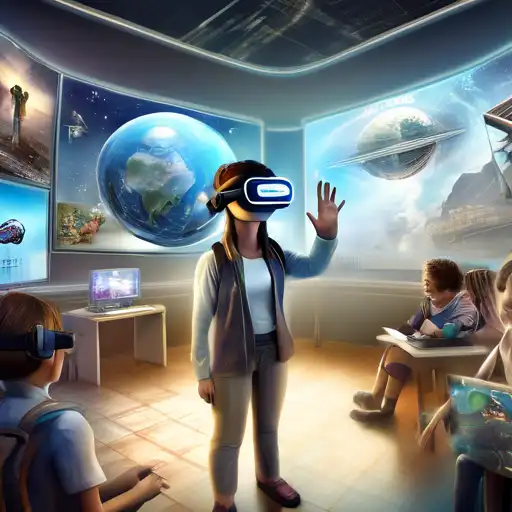Introduction to Virtual Reality in Education
Virtual Reality (VR) is rapidly transforming the educational landscape, offering immersive learning experiences that were once unimaginable. This technology enables students to explore virtual worlds, conduct experiments in safe environments, and interact with complex concepts in a tangible way. As we delve into the potential of VR in education, it's clear that this technology is not just a fleeting trend but a significant leap forward in how we teach and learn.
The Benefits of VR in Learning Environments
VR brings a host of advantages to the educational sector. Firstly, it enhances engagement by providing interactive and captivating content that traditional textbooks cannot match. Secondly, it caters to various learning styles, especially kinesthetic learners, by allowing them to 'learn by doing'. Moreover, VR can simulate real-life scenarios for practical training in fields like medicine, engineering, and aviation without the associated risks or costs.
Implementing VR in Classrooms: Challenges and Solutions
Despite its benefits, integrating VR into education comes with challenges. The cost of VR equipment and the need for technical support can be prohibitive for some institutions. However, solutions such as shared VR labs and the use of more affordable VR headsets are making this technology more accessible. Additionally, educators are finding innovative ways to incorporate VR into their curricula, ensuring that students from all backgrounds can benefit from this revolutionary tool.
Future Prospects of VR in Education
The future of VR in education is bright, with ongoing advancements making it more immersive and interactive. As VR technology becomes more affordable and widespread, its adoption in schools and universities is expected to soar. This will not only enhance learning outcomes but also prepare students for a future where digital literacy is paramount. The potential for VR to connect learners from around the globe in virtual classrooms also presents an exciting opportunity for collaborative learning.
Conclusion
Virtual Reality is set to redefine the boundaries of education, offering unparalleled opportunities for immersive learning. While challenges remain, the potential benefits for students and educators alike are too significant to ignore. As we continue to explore and invest in VR technology, the next frontier in education looks more exciting than ever.
For more insights into innovative learning technologies, check out our articles on EdTech Trends and Digital Classrooms.
